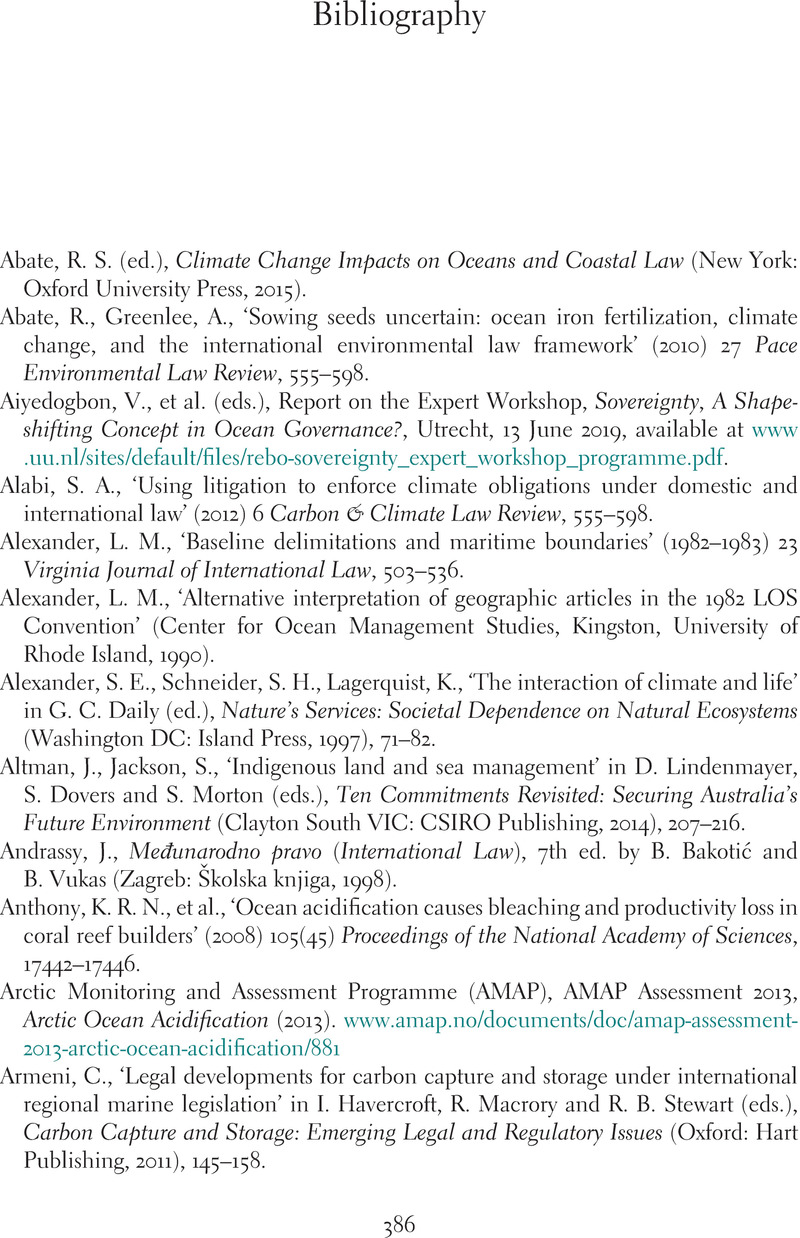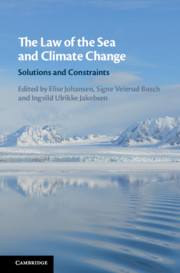Book contents
- The Law of the Sea and Climate Change
- The Law of the Sea and Climate Change
- Copyright page
- Contents
- Contributors
- Preface
- Acknowledgements
- International Instruments
- Table of Cases
- Abbreviations
- 1 The Role of the Oceans in Regulating the Earth’s Climate
- 2 Climate Change and the Anthropocene
- 3 Mitigation and Adaptation
- 4 Protecting the Marine Environment from Climate Change
- 5 Ocean Acidification
- 6 Regulating Greenhouse Gases from Ships
- 7 Carbon Capture and Storage and the Law of the Sea
- 8 Ocean Fertilization
- 9 Offshore Renewable Energy and the Law of the Sea
- 10 Marine Protected Areas and Climate Change
- 11 Integrating Climate Change in International Fisheries Law
- 12 Adaptation of Aquaculture to Climate Change
- 13 Law of the Sea Responses to Sea-Level Rise and Threatened Maritime Entitlements
- 14 Integrating Climate Change in the Governance of Areas beyond National Jurisdiction
- 15 The Law of the Sea and Its Institutions
- 16 The Law of the Sea as Part of the Climate-Change Regime Complex
- Bibliography
- Index
- References
Bibliography
Published online by Cambridge University Press: 21 January 2021
- The Law of the Sea and Climate Change
- The Law of the Sea and Climate Change
- Copyright page
- Contents
- Contributors
- Preface
- Acknowledgements
- International Instruments
- Table of Cases
- Abbreviations
- 1 The Role of the Oceans in Regulating the Earth’s Climate
- 2 Climate Change and the Anthropocene
- 3 Mitigation and Adaptation
- 4 Protecting the Marine Environment from Climate Change
- 5 Ocean Acidification
- 6 Regulating Greenhouse Gases from Ships
- 7 Carbon Capture and Storage and the Law of the Sea
- 8 Ocean Fertilization
- 9 Offshore Renewable Energy and the Law of the Sea
- 10 Marine Protected Areas and Climate Change
- 11 Integrating Climate Change in International Fisheries Law
- 12 Adaptation of Aquaculture to Climate Change
- 13 Law of the Sea Responses to Sea-Level Rise and Threatened Maritime Entitlements
- 14 Integrating Climate Change in the Governance of Areas beyond National Jurisdiction
- 15 The Law of the Sea and Its Institutions
- 16 The Law of the Sea as Part of the Climate-Change Regime Complex
- Bibliography
- Index
- References
Summary

- Type
- Chapter
- Information
- The Law of the Sea and Climate ChangeSolutions and Constraints, pp. 386 - 420Publisher: Cambridge University PressPrint publication year: 2020



